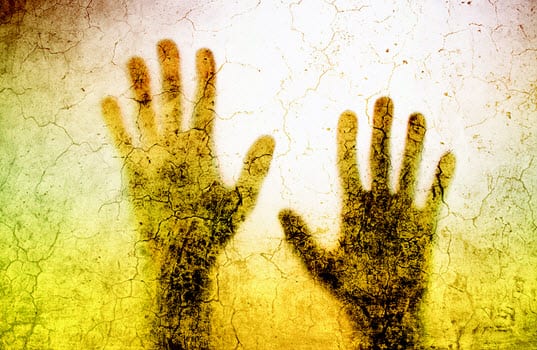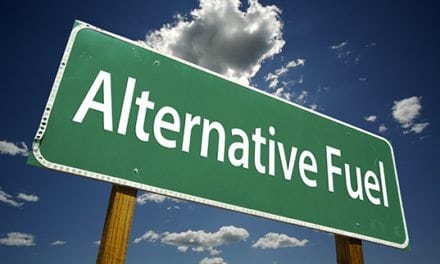By Keith Reid
The Department of Homeland Security defines Human trafficking as: “… modern-day slavery and involves the use of force, fraud, or coercion to obtain some type of labor or commercial sex act.”
According to DHS, approximately 18,000 persons are trafficked into the United States from over 50 countries every year. More than 300,000 children are trafficked within the United States annually. DHS noted that traffickers use force, fraud or coercion to lure their victims and force them into labor or commercial sexual exploitation.
The department notes traffickers look for people who are susceptible for a variety of reasons, including psychological or emotional vulnerability, economic hardship, lack of a social safety net, natural disasters or political instability. The trauma caused by the traffickers can be so great that many may not identify themselves as victims or ask for help, even in highly public settings.
A growing movement is underway to fight human trafficking, and it’s one many businesses can take an active role in fighting that has little impact on their operations but an extreme impact in saving victims and bringing exploiters to justice.
The Role of Convenience Stores
Convenience stores have become the local “corner” community stores that were once a feature of many residential neighborhoods. This provides an excellent opportunity to support the fight against human trafficking, which the National Association of Convenience Stores (NACS) has embraced.
“We’re doing this because we feel there’s a connection with communities that we can deepen,” said Jeff Lenard, NACS’ V.P., Strategic Industry Initiatives. “We’ve worked with the DHS’s Blue Campaign to help tell the story around trafficking. We have multilingual materials available on our website that people can use and we coordinate with other groups such as Convenience Stores Against Trafficking (CAST) on how we can be part of the solution.”
CAST, a program of the nonprofit IN OUR BACKYARD (IOB), partners with c-store retailers, petroleum marketers, state associations and industry suppliers in more than 40 states. The program has been featured in the NACS Community Toolkit. Among many materials, they have developed stickers that can be posted in restrooms with hotline information for victims and training for store employees and managers.
“Convenience stores are not primary locations where human trafficking is occurring, though obviously it can occur anywhere,” said IOB Program Director Juliana Williams. “Half of the U.S. population uses a convenience store every day. So, they are in our communities and represent a prime target for awareness.”
Williams noted that human trafficking victims are using convenience stores daily, sometimes multiple times per day, to get their essentials because they move around more on a day-to-day basis. If they are involved in prostitution, they have multiple customers and they’ll often go to a convenience store in between to use the restroom to clean up.
“That might be the only moment that they’re even alone and away from their trafficker,” Williams said. “So, that’s why our Freedom Stickers are so essential because they give them that hotline to call to escape—a beacon of hope out of the life that they’re in. And, we’ve had cases of victims recovered because of the sticker in a convenience store restroom.”
The Role of Travel Plazas
Travel plazas and truckstops have a more transient customer base than the typical convenience store, but they provide other opportunities to play an intervention role in human trafficking. It is not uncommon for human traffickers to travel the highways with their victims. Prostitution can also be attracted to these locations.
“Our truckstops tend to be family-run businesses,” said Tiffany Wlazlowski Neuman, NATSO’s Vice President, Public Affairs . “We have a lot of third-generation family members taking over these businesses. They are like their homes and they don’t want any crime at their locations so they are really focused on how they can help. The NATSO Foundation has focused on training truckstop employees to understand what human trafficking is, the signs and what steps to take.”
NATSO works closely with the Department of Transportation, Department of Homeland Security, Truckers Against Trafficking, Polaris Project, National Center for Missing and Exploited Children and other local organizations to gain insight into best practices on how to educate its members.
NATSO launched an online learning tool designed to help teach truckstop owners, operators and employees how to respond if they suspect human trafficking. The course is available free of charge to any member of the truckstop and travel plaza community. It also provides the DHS Blue Campaign’s training and awareness materials—including posters, handouts and other materials.
The Role of Truckers
Truck drivers are another key vector in the fight against human trafficking, as they also represent a community that can keep its eyes open for potential signs that the practice is occurring.
“The 3.5 million professional truck drivers on the highways see a lot,” said Elisabeth Barna, Chief Operating Officer and Executive Vice President of Industry Affairs for the American Trucking Associations. ATA focuses on its anti-trafficking campaign through its safety-focused America’s Road Team and alliances with such groups as Truckers Against Trafficking (TAT). “And our drivers who live and deliver in every community every day know when something’s a little bit off or a little different.”
Human traffickers involved in prostitution also see truck drivers as potential business opportunities. Truck drivers are morally no different than the general population, but route drivers are not immune to common temptations and over the road trucking can be a lonely job combined with often aggressive temptations in common rest areas and lots.
“Unfortunately, some of our drivers are approached while they are resting in their trucks,” Barna said. “They can intervene and save lives. A lot of people see something and they want to make that call but they don’t want to wait around for the police to come or they don’t want to be in the middle of an investigation. We show them you can make that call and do it anonymously and the authorities will take over after that.”
The temptations with prostitution that arise are also a focus. Truckers Against Trafficking recently launched its “Man to Man” campaign. “It’s basically saying, man to man, don’t engage in it,” said Barna who also sits on the TAT board. “Trafficking is very harmful for those being trafficked. If you are involved consider that, and if you have friends who are involved, ask them not to because then the demand goes away.”
Get Involved
To get involved, owners and employees are not expected to take on law enforcement responsibilities. The posting of materials like stickers that allow a victim to start the process of leaving servitude is an easy step. Beyond that, observing and passing along tips to authorities is important.
“We’re asking someone who suspects trafficking is occurring to write down a physical description and a description of any vehicles if they are present,” said Williams. “Note the time of day because you can then go back and search the video. You do not confront a suspected trafficker or alert the victim to your suspicions. It’s up to law enforcement to investigate. And, you can call the National Human Trafficking Hotline. They are experts in human trafficking specifically, so they will be able to help sort out whether what was observed might have been human trafficking.”
To get involved, you can contact any of the organizations listed in this article to see how your operations fit in with their programs or the programs they support. More immediately, anyone who suspects human trafficking should call local authorities or the toll-free 24-hour hotline for the National Human Trafficking Resource Center: 888-3737-888, or text BeFree (233733). You can also leave a tip on their website at https://humantraffickinghotline.org/report-trafficking.
How to Identify a Human Trafficking Victim
Ordinary citizens can be trained to recognize the signs and what they can do to stop it, particularly at crowded events like the Super Bowl. Possible situations to look for include:
- A young girl who is with someone who is older, partying and/or romantically involved and that person seems to be in charge of where she goes, what she does and who she talks to
- Someone who appears to be soliciting for prostitution—the majority are sex trafficked, even though they may claim to be on their own
- Those dressed in a provocative way, are exceptionally flirty and repeatedly check-in with someone else on a cell phone or in person
- Someone who seems to have a bodyguard or friends watching from a distance
- Someone who is avoiding normal eye contact with others, unless soliciting
- Someone who acts a bit skittish, fearful or appears drugged or drunk
- Teens who are trying to appear as adults and carry and present fake ID
- Physical appearance shows signs of injuries, abuse or torture
- Someone who is not free to leave or come and go as he/she wishes
- Someone who works long hours with no breaks or unusual restrictions
- Someone who is unable to clearly explain where they live
Source: IN OUR BACKYARD









